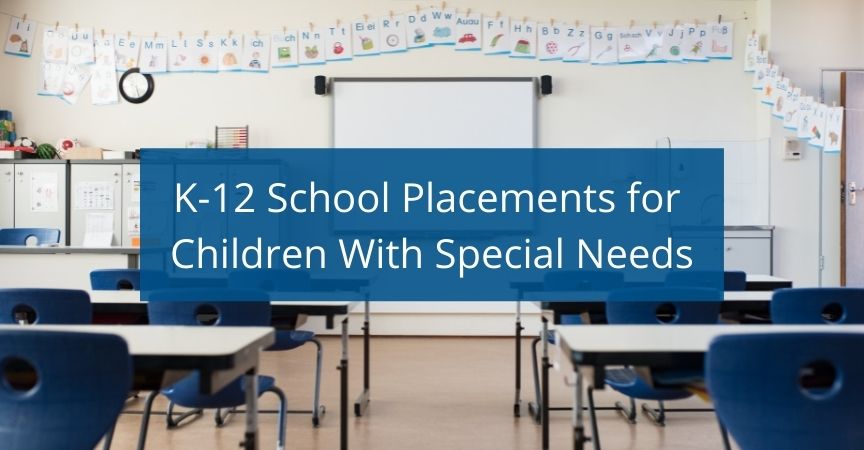Roughly 14 percent of all public school students in the United States are those who receive special education services under the Individuals with Disabilities Education Act (IDEA), according to the National Center for Education Statistics (NCES).
With school just getting back in session, now is a good time to revisit the learning options for those K-12 students and understand the placement options available to them through the public school system.
IDEA, enacted in 1975, mandates that all eligible students in the U.S. ages 3 through 21 are entitled to a free and appropriate public school education. That means public schools are required by law to provide additional services and resources for children with special needs at no additional cost to the families.
However, not all disabilities are the same in terms of what they require from a school curriculum perspective. A child with moderate to severe autism will need substantially different services than a child with a more minor learning disability. Based on the nature of their disability, the child could spend their school time in a general education classroom, a resource room, both, or in a completely different learning environment.
The Individualized Education Plan (IEP) will determine where your child gets placed. Putting them in what’s called a “least restrictive environment” (LRE) is a vital part of the IEP. The idea is to let the child learn in a general education setting as much as possible.
When working with your IEP team, you will likely learn about the following placement options:
- General education settings: In this placement, special needs students receive the majority of their education in a general education setting with other, non-special needs students.
- Some time in a resource room: Students receive some special education and related services outside of the general education classroom, in a room dedicated to giving a small group of children with special needs extra assistance based on their individual learning disabilities. Normally students placed in this option spend less than half their day in the resource room.
- Special Day Class (SDC): Students who require more attention and services may spend more than half their day — and sometimes even their whole day — in the resource room or a self-contained classroom in the main public school.
- Nonpublic schools: The nonpublic school placement (NPS) is for students with special needs that cannot get an adequate education from their local public school, even with modifications and supporting services to their classroom experience. Note that this is not a private school that would require parents to pay tuition. The school district pays for NPS placement.
- Residential facilities: In cases of severe disabilities, a child may need to receive their education in a public or private residential facility, paid for by the public. This option typically applies to children who need care 24 hours per day.
Again, where your child gets placed may vary based on their individual disability and what it requires.
The Law Office of Jennifer Chang believes in protecting students’ rights to a free and appropriate education under both federal and state laws. If your child is eligible to receive special education and is not getting the appropriate services, placement, or accommodations, Jennifer Chang, special education attorney will fight vigorously on your family’s behalf. Please reach out to us today or call (323) 931-5270 to discuss your case.
